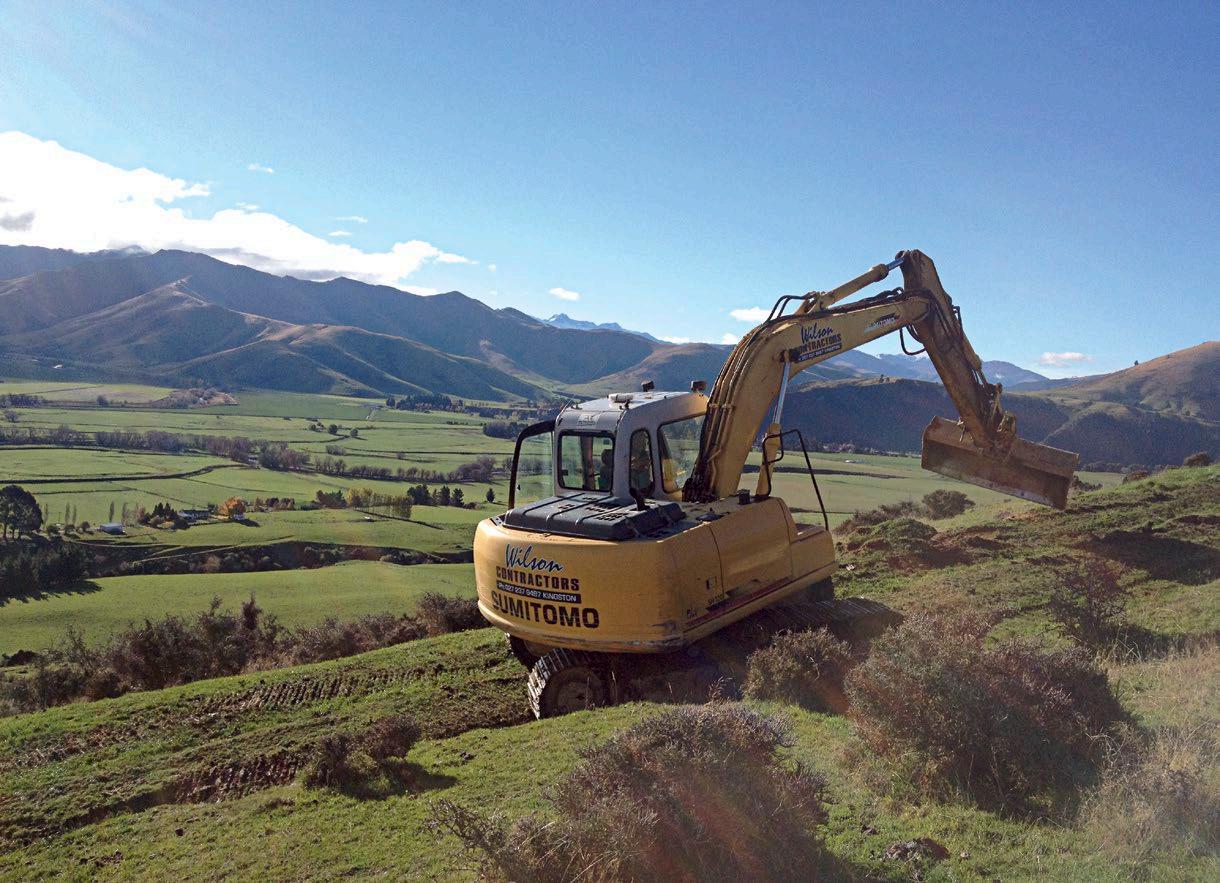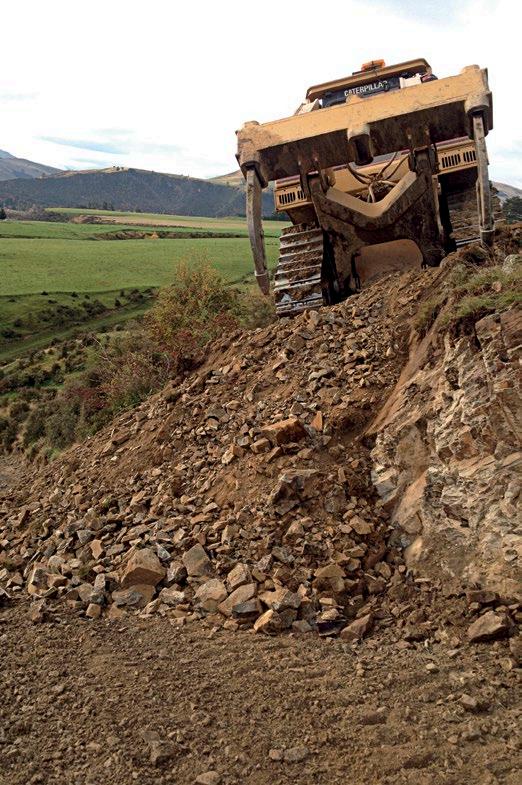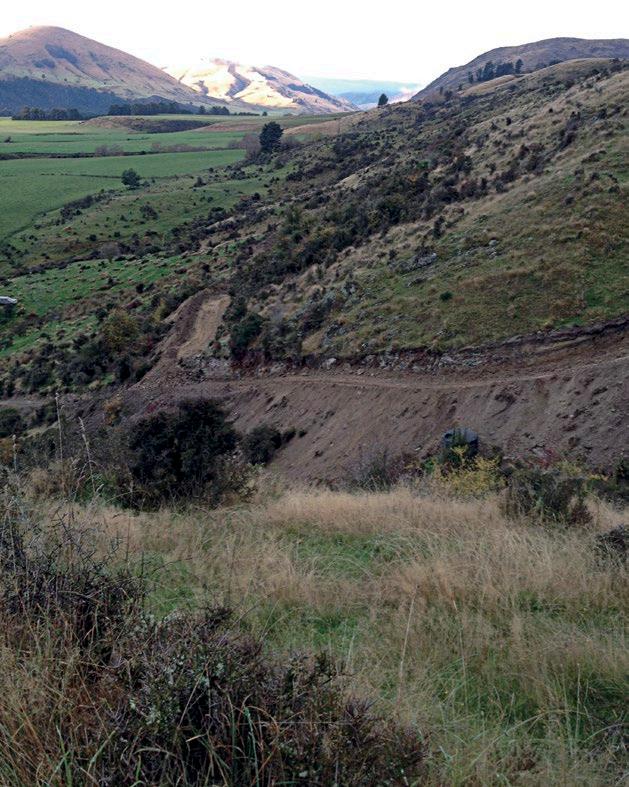
3 minute read
Wilson Contractors
Water boys ramp up technology
to overcome gravity
Advertisement
Costs, contours and cattle were top of mind for Tony Wilson when he took on the job to design and build an upgraded stock watering system on Flagstaff Station in Southland.
CATEGORY 1
PROJECT: Flagstaff Water Scheme, Southland CONTRACTOR: Wilson Contractors Elevation, accessibility for construction, cost and a reliable flow during all seasons were crucial factors to the success of Wilson Contractors’ project for a Southland farming business.
Client Arthur Innes introduced the company to the project by identifying some of the areas where he required stock watering. The team next evaluated the proposed sites and then tried to figure out how they might install a completely gravity-fed system.
“Initially, handheld GPS equipment was used to survey the elevations of pipelines to determine pressure,” says principal Tony Wilson. “During the design we found that Google Earth elevation readings matched our handheld equipment almost exactly. [Fortunately] this saved many hours traversing the site and allowed us to quickly make changes to the design.”
But that doesn’t mean the project was all smooth sailing. Among just some of the many challenges was the fact that the water trough locations were higher than the water source.
After considering how to deal with this, Tony figured his options included: installing a power supply to pump water,


using more expensive solar-powered pumps, or using the elevation of the water source to drive a ramp pump.
Ultimately, the ramp pump technology was selected as the best option.
“We had carefully designed water-storage facilities. The pump moved water 100 metres vertically up the hill to storage tanks where stock troughs were gravity fed over the Midway Block of Flagstaff Station close to Athol.
“Taking this approach would allow our client to manage his farming operation with greater flexibility and reliability. This is because he’d have improved water supply over a larger percentage of the property.”
The project started in May and ended in September 2014. It cost only $50,493 and has since won praise from all corners, most importantly from the client.
The build was also one of this year’s Hynds Construction Awards winners.
Tony says the overall project cost was helped by a number of factors, especially the client’s relationship with a local helicopter company, which the contractors used to fly the storage tanks into position (rather than use excavators to carry them).
Costs were also reduced because of the cheaper but heavily manual way they laid the pipelines.
“Our total crew consisted of a CAT D8 bulldozer and two labourers. We found that laying out the pipeline and prejoining lengths made the physical ripping section of work much shorter,” he explains. “This meant the costly equipment was required for fewer hours. [Also], we were able to very efficiently pull in the cables with a reduced crew, allowing another team member to commence other aspects of the job.”
Apart from the hard graft of heavy manual labour across steep terrain, the realities of the build being situated on a working farm presented other difficulties.
“During the first weeks of the project we were asked by the client to alter the staging of our work to accommodate his farming system. As he had stock coming onto the property for winter grazing he asked if we could focus on installing the bulk of the gravity-fed part of the system first, as this services the lower flats where most of the winter crops were planted.
“What’s more, the site is very steep in places so we made the decision on-site to create safe working platforms as the risks and potential for harm was very high.”
Despite these obstacles, health and safety remained paramount and there was not a single incident recorded.
Multiple site visits have since been carried out and confirm the pump is working to all desired specifications. l










